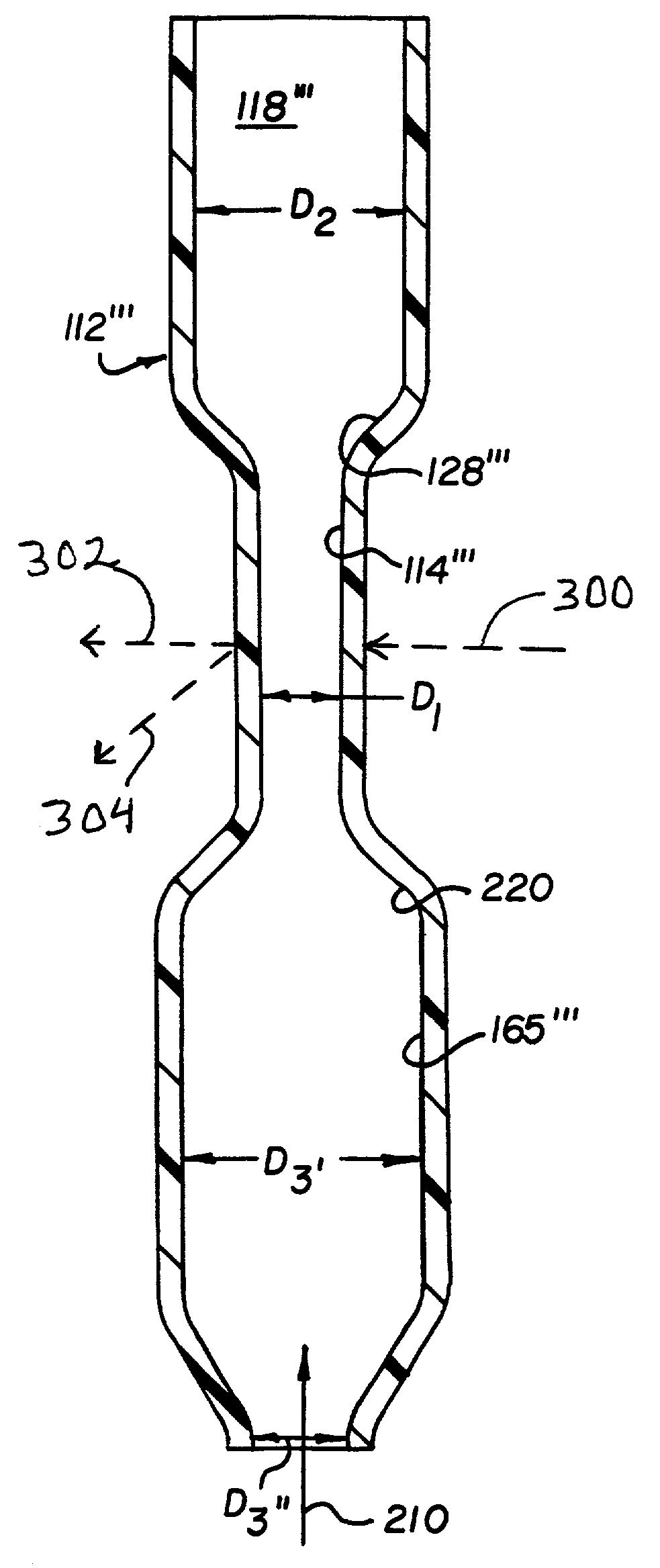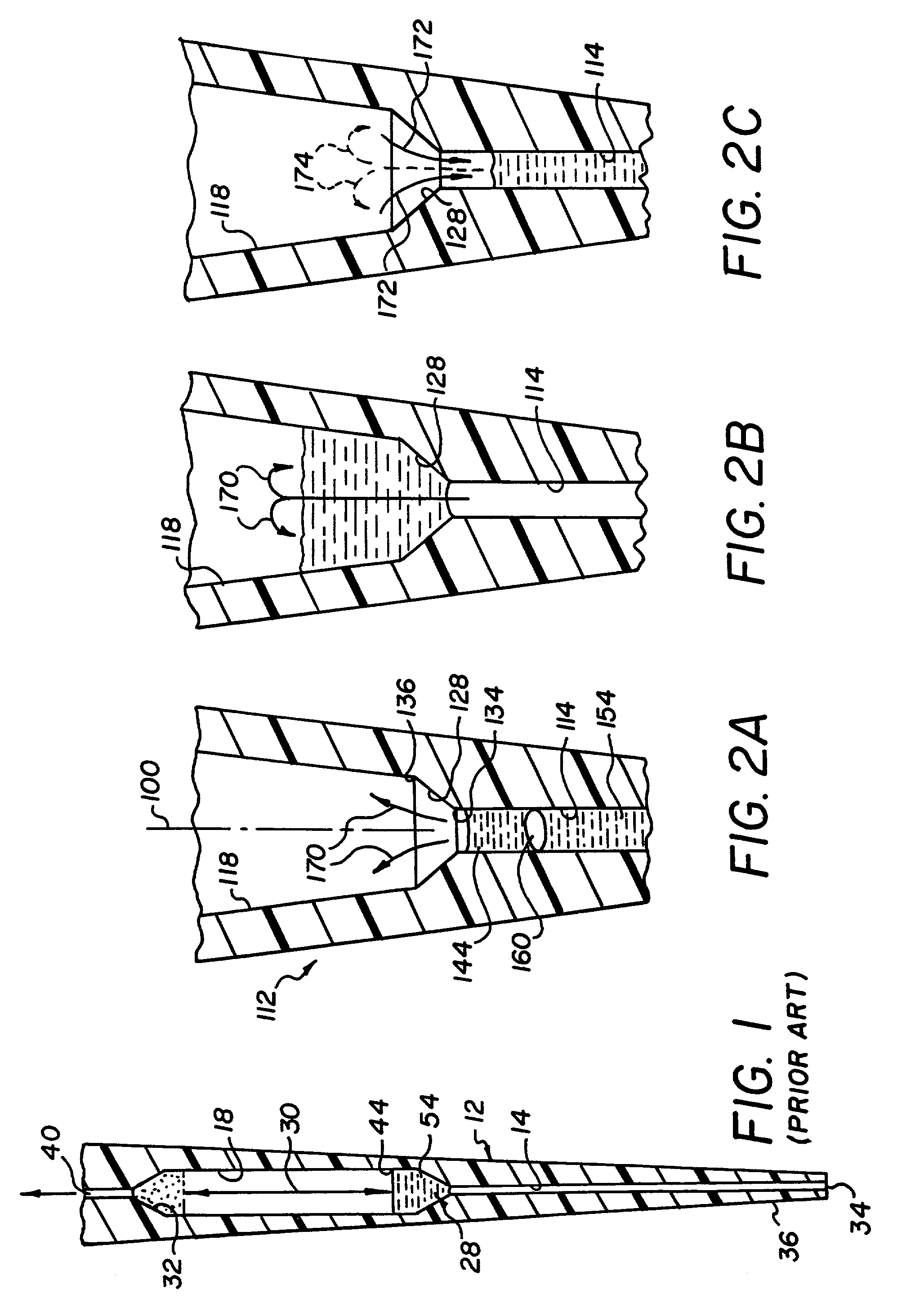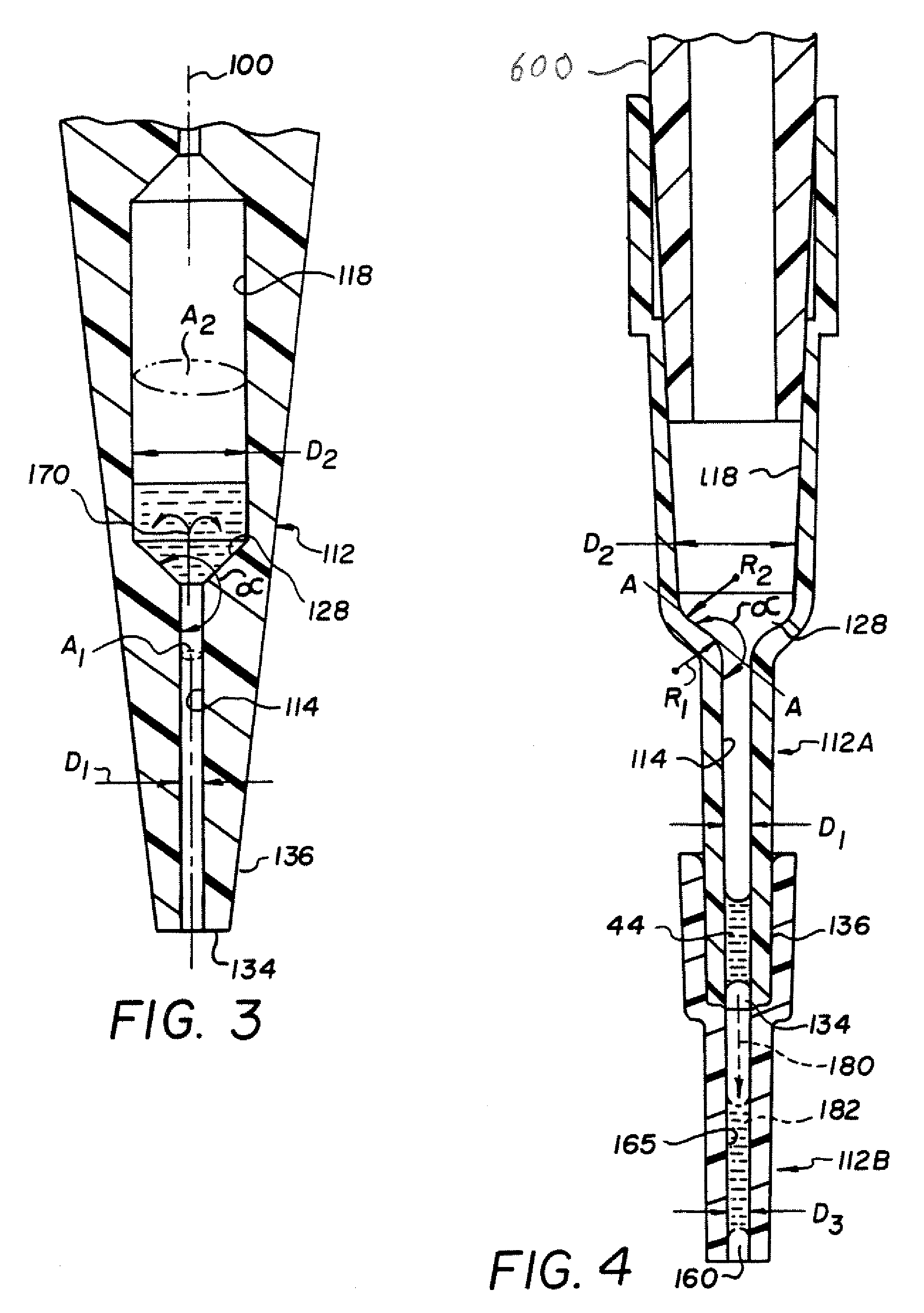Aspirating and mixing of liquids within a probe tip
- Summary
- Abstract
- Description
- Claims
- Application Information
AI Technical Summary
Benefits of technology
Problems solved by technology
Method used
Image
Examples
example no.1
EXAMPLE NO. 1
[0097]A probe was constructed having two capillaries with different inner diameters. The smaller capillary had an inner diameter of 0.557 mm. The larger capillary had an inner diameter of 2.29 mm. The length of the smaller capillary was 41 mm, which holds up to 10 micro-liter of fluid. The larger capillary had a length of 30 mm.
[0098]A type B blood of 4 microliters was aspirated from the bottom end of the small capillary by the pump. The pump then continued to withdraw 1 micro-liters of air in the small capillary. 4 micro-liters of the agglutinating reagent described above was aspirated thereafter and the air bubble separated the two liquids in the smaller capillary.
[0099]The pump was then driven to move all the fluids across the transition zone between the small and large capillary with a flow rate of 0.5 micro-liter / second. Once in the larger capillary, a spherical air bubble was created by the surface tension, and the two liquids started to encounter and mix. As the ...
example 2
[0103]A probe was constructed similar to shown in FIG. 9, except that the tip portion 165′″ was cut off at line C-C to create a cone-shaped tip portion having an inside diameter at D3 of about 2.54 mm, and at cut line C-C of about 1 mm, with a cone angle of about 20 degrees and a length of 10 mm. Tip portion 114′″ had a length of about 15 mm and an inside diameter D1 of about 1 mm. Tip portion 118′″ had a diameter D2 of about 4.7 mm. Blood in an amount of 10 microliters was aspirated into the entire tip ensemble through cone portion 165′″, after which the cone was wiped clean. Then 10 microliters of reagent were aspirated into the tip in the same manner, producing a total liquid volume of 20 microliters. This total volume was then moved back and forth so as to proceed entirely into portion 118′″ and then entirely into portion 165′″, and so forth, until mixing was complete. This required 7.5 repetitions (cycles) at a flow rate of 50 microliters per sec. Total displacement of fluids w...
PUM
| Property | Measurement | Unit |
|---|---|---|
| Length | aaaaa | aaaaa |
| Diameter | aaaaa | aaaaa |
Abstract
Description
Claims
Application Information
 Login to View More
Login to View More - R&D
- Intellectual Property
- Life Sciences
- Materials
- Tech Scout
- Unparalleled Data Quality
- Higher Quality Content
- 60% Fewer Hallucinations
Browse by: Latest US Patents, China's latest patents, Technical Efficacy Thesaurus, Application Domain, Technology Topic, Popular Technical Reports.
© 2025 PatSnap. All rights reserved.Legal|Privacy policy|Modern Slavery Act Transparency Statement|Sitemap|About US| Contact US: help@patsnap.com



